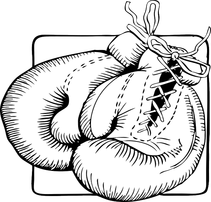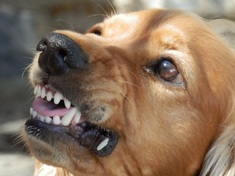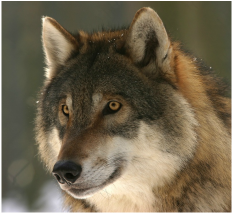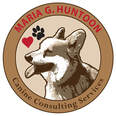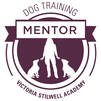When Buddy Turns Into "Cujo" - Understanding Aggression in Dogs
|
We’ve all heard of Stephen King’s nightmare – a terror with four legs, a tail, and plenty of teeth to tear apart anything or anyone who comes into his path. While Cujo is a fictitious character, sometimes we feel that when our dogs start showing some aggression they are destined for the same torrential path.
A lot of people contact me for help with their dog’s aggression, either towards other dogs or with people. While there are different kinds of aggression, the most common aggression I see is in relation to a dog’s underlying insecurity and fear. Our natural reaction as humans is to want to discipline the dog for this undesirable and even harmful behavior, but what we often don’t realize is that meeting aggression with more aggression on our end only exacerbates the problem and makes it worse. When you’re dealing with fear and insecurity, our job has to be to help the dog become more secure and diminish his fears so he can become a comfortable, happy and friendly member of our homes and society. |
Aggression is a complex subject. Unless you are dealing with pain aggression (caused by a sudden ailment that makes your dog physically and therefore emotionally uncomfortable – and you should always rule out any medical reason for sudden aggression by having a thorough checkup at your vet), most aggression is much deeper-rooted than something that will be cured in a few days. It takes patience, understanding, the right kind of leadership, and appropriate sub-threshold positive exposure to decrease a dog’s aggressive tendencies and turn his behavior around. Can it be done? Absolutely! But it will take time and there is no “quick fix.”
|
Especially when you consider that aggression is natural to any living being. When any of us are feeling threatened or severely uncomfortable, it really comes down to two options: fight or flight. I’m sure you’ve heard of this before. Have you ever had this scenario?... Your dog has to be socialized to other dogs so you choose to take him to the dog park. He runs up and meets a few other dogs (or has other dogs run up to him) and there are no growls so you think he’s happy and all is well. This may even happen a few times, since you take him often. He roughhouses with the other dogs, and since they all are acting similarly you figure they’re just playing. Then he wanders off to a quiet corner to sniff, you think he just has to pee. You’re chatting with another dog owner when all of a sudden you hear a blood-curdling howl and your Max is going after Lucy who just came up to pounce on him playfully!
|
So what went wrong? How did your dog all of a sudden become such a monster? Chances are, your dog was giving signs leading up to this event that he wasn’t comfortable, but sometimes those signs are subtle and difficult for the average human to read unless you know what you’re looking for. Dogs don’t speak English after all; they do all their communicating through their body language. So when no action was taken to respect Buddy’s comfort level around the other dogs, and now he was backed into a corner with Lucy bounding up to him exuberantly (which he knows is going to result in a body slam), Buddy has to act to protect himself. That’s when the bite occurs. (For more information on handling dog parks, see my article “The Good, The Bad and The Ugly?: The Truth About Dog Parks.”)
|
Too many times, we inadvertently put our dogs into situations that are too much for them, thinking this will help them “man up” and deal with it, or make them feel better about something through the concept of immersion, but in reality it usually does quite the opposite. If we feed the insecurity and fear by putting our dog in too many situations where the pressure is high and he can’t get out, “fight” is the only other option on the menu. Unfortunately, the more the dog practices standing up for himself in this way, and it works, we are unintentionally creating a monster. And this can be a detriment to your relationship.
|
A dog needs to feel safe and understand that his person has got his back. You won’t throw him into the fire or put him in over his head. You love him, and you certainly want to help him bring out his best self. That just means understanding your dog’s individuality and his comfort level, and taking action to only put him in situations that are going to help him feel more comfortable and secure. Yes, there are times when life just happens and we just have to react in the best way we can, but we should make these reactions the exception - and make planning ahead, thinking and then acting appropriately the rule.
You wouldn’t bring your 2-year-old son to a night of drinking out on the town with your friends or to a brothel, would you? I hope not, because you probably realize that’s wildly inappropriate for your child’s development. Just like you have boundaries with your kids, it’s important to respect boundaries with your dog as well. Not every dog is a social extrovert that wants to be friends with every other dog he meets – so if this is your dog, it’s not appropriate to bring him to a dog park. Or if a dog was abused early in his life by a large man, it’s no wonder that he is fearful of unknown large men approaching him and growls – so don’t let large men just come up to him and then reach over his head to pet him. Your dog needs to be able to see you as a trustworthy, respectable leader and someone with whom he wants to have a relationship that he can count on.
You wouldn’t bring your 2-year-old son to a night of drinking out on the town with your friends or to a brothel, would you? I hope not, because you probably realize that’s wildly inappropriate for your child’s development. Just like you have boundaries with your kids, it’s important to respect boundaries with your dog as well. Not every dog is a social extrovert that wants to be friends with every other dog he meets – so if this is your dog, it’s not appropriate to bring him to a dog park. Or if a dog was abused early in his life by a large man, it’s no wonder that he is fearful of unknown large men approaching him and growls – so don’t let large men just come up to him and then reach over his head to pet him. Your dog needs to be able to see you as a trustworthy, respectable leader and someone with whom he wants to have a relationship that he can count on.
Whenever you’re dealing with aggression of any kind, it is definitely imperative to consult a behavior professional. Often, when owners try to take on aggression on their own, they actually exacerbate the problem and make it worse. It takes a thorough understanding of your dog’s situation, body language and positive behavior modification techniques to make sure that we are reinforcing the behavior we want to see continue and extinguishing the behavior that we don’t. Again, dealing with aggression is a complex issue and only qualified professionals will have the skills to help you and your dog work through it.
In short, here are some of the things we must keep in mind when working with aggression. For a personalized and detailed plan, please schedule a consultation with me so we can help you and your dog get to the bottom of this and bring out his happy, confident, and non-aggressive self!
In short, here are some of the things we must keep in mind when working with aggression. For a personalized and detailed plan, please schedule a consultation with me so we can help you and your dog get to the bottom of this and bring out his happy, confident, and non-aggressive self!
|
MYTH: Aggression is Related to Dominance, So We Must Fight it By Putting the Dog in Its Place
First, let’s address the “dominance” myth… You've probably heard of this “dominance theory," which claims you must be "alpha" and let your dog know he is lesser than you. That if a dog walks ahead of you on leash or growls if you come near him while he has his bone that it means he is trying to assert his dominance over you and you therefore have to put him in his place and show him who the “top dog” is. This is all based on scientific evidence that dogs evolved from wolves, however dogs are now separated from wolves by thousands of years of evolution and are no more like wolves today than we are like Neanderthals. |
What we’ve learned in recent years about dogs and their emotional states, feelings, and how they learn and process information, is that these kinds of dominance-based, punitive training methods which use intimidation tactics actually do the opposite of what we want to have for our dogs. Being heavy-handed, raising your voice or rolling your dog into submission can actually create fear and a dog who doesn’t want to work with us out of respect, but will rather be forced to listen for fear that if they don’t, something very bad will happen to them. This is not a healthy relationship for anyone, including our dogs. And when it comes to aggression, a dog is more likely to act out aggressively if he is feeling threatened. Many aggression issues can be remedied by providing clear boundaries and consistent leadership, working to build confidence and decrease stress, and using positive reinforcement and counter-conditioning techniques.
Working Through Aggression by Exhibiting Proper Leadership
In order for your dog to feel comfortable around other dogs or new people, it starts with YOU. You must lead him by example, which means that the calm, confident energy you bring to the situation makes a big difference, as does your ability to understand your dog’s threshold and work within that threshold accordingly to set him up for success.
In order for your dog to feel comfortable around other dogs or new people, it starts with YOU. You must lead him by example, which means that the calm, confident energy you bring to the situation makes a big difference, as does your ability to understand your dog’s threshold and work within that threshold accordingly to set him up for success.
- Demonstrate calm, direct, clear communication, patience and leadership based on respect rather than fear.
- Set clear boundaries to encourage your dog to make correct choices and providing positive reinforcement when he does. This includes setting parameters on the situation, setting up for success rather than failure, so proper learning can occur.
- Pay close attention to your dog’s body language so you can understand what he is trying to communicate to you. Especially watch his eyes – if you can see what he’s looking at and it happens to be the trigger of his aggression, you can get a sense for how long it will be until he reacts and you can stop a reaction before it occurs.
- Do not take for granted any good choice that your dog makes. If he was able to see the trigger and not react, this is not an accident. He is choosing to do the right thing so that means he should get handsomely rewarded! If you miss the chance to reward him, you miss a training opportunity so that means being alert and seeing things from your dog’s perspective so you can understand his actions and choices.
- Quickly redirect incorrect choices by telling your dog what he should do instead and take notes about how to set up the situation better next time (do not punish!).
- Break lessons into small slices that your dog can comprehend and meet your dog where he’s at mentally and emotionally so he can process. (See "Small Slices - What Do These Really Look Like?")
- Have realistic expectations and understand your dog’s boundaries in a given situation.
- Display confident, calm control but be careful not to micro-manage, as this can add to anxiety. Be patient and give your dog a chance to make choices.
- Use appropriate training equipment so as not to add stress (avoid prong or shock collars, and use the leash as a safety tool - not as a way to physically manipulate your dog).
- Meet your dog's needs for exercise (physical stimulation), social interaction, training (mental stimulation), down time, and others so he is in a better mental space.
- If you have one dog that feeds off of your other dog, working with each dog individually will be necessary to get to the root of the problem for each dog. Together, they may continue to exacerbate the problem, since all dogs learn at different paces and have different personality traits.
Providing Frequent Opportunities for Positive Exposure
If your dog is going to get over his aggressive tendencies, he has to have plenty of opportunities to practice being around the stimulus that sets him off (if you avoid the stimulus altogether he will not learn), yet this needs to be done in a way that is within his comfort level and makes him feel safe.
If your dog is going to get over his aggressive tendencies, he has to have plenty of opportunities to practice being around the stimulus that sets him off (if you avoid the stimulus altogether he will not learn), yet this needs to be done in a way that is within his comfort level and makes him feel safe.
- Building up strong skills such as name response, check in, “let’s go” and leash manners will give you some tools to be able to use in these stimulating situations. In order to use them effectively though, you must first practice plenty with your dog at home and in lower-stimulation environments and situations where he can stay thinking and learning. The goal is to get these skills so ingrained in your dog’s mind, that even when he is hit with a stimulating circumstance it will be easy for him to call up this skill in his mind (like how you could still sing your alphabet even if you are stuck in traffic or on a rollercoaster).
- The amount varies depending on the particular dog and the severity of the issue, but I usually recommend providing at least 4-6 positive repeat exposures every week (to familiar places or with familiar dogs/people) and at least 2-3 new exposures every week (to unfamiliar places or with unfamiliar dogs/people), taking measures to set up to be positive.
- Use distance as necessary to identify your dog’s threshold (the limit he can endure without having a reactive response) and keep exposures within threshold to set your dog up for success.
- Provide plenty of positive reinforcement (in the form of verbal praise, treats, and petting if your dog enjoys it) for being in the presence of the trigger (other dogs or unfamiliar people) and not reacting. You want your dog to learn that seeing the trigger is a GOOD thing and he doesn’t have to feel insecure or defensive; instead he may actually come to like it! This is called counter-conditioning.
- If you surpass the threshold and the dog reacts, quickly but calmly redirect with “let’s go”, move in the opposite direction (turning your dog’s back to the trigger), and create more distance between your dog and what set him off. Try again at a safer distance.
- Provide more passive exposure than active exposure to build confidence. This means letting your dog watch, listen and process triggers from a distance where there is no immediate threat and the dog can just relax. The world may be happening around him, but he’s safe where he is.
While these tips can give you a general idea of the positive methods used to help your dog work through his aggression concerns, again – please contact a behavior professional for help with any kind of aggression! And please make sure they use positive reinforcement and force-free training methods to battle this issue! Too many dogs are relinquished to shelters and euthanized every year because owners try to take on this complex beast of aggression by themselves, or they hire a traditional-style trainer that practices punitive dominance methods, and find they create bigger problems. You do not want your dog to keep biting people or getting into fights with other dogs that result in a trip to the vet or emergency clinic. Help is right here! All you have to do is contact us.
For help in working your dog through any aggressive tendencies, please contact Maria at (845) 549-0896 or [email protected]. Together we can help your dog bring out his best self in the face of his insecurities!
For help in working your dog through any aggressive tendencies, please contact Maria at (845) 549-0896 or [email protected]. Together we can help your dog bring out his best self in the face of his insecurities!
Written by Maria Huntoon, Maria G. Huntoon Canine Consulting Services

